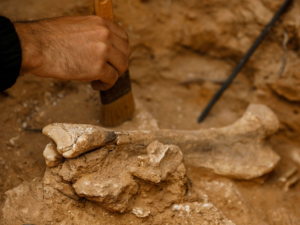Key Points
Question Is maternal prenatal exposure to lithium in drinking water associated with autism spectrum disorder (ASD) in offspring?
Findings In this Danish nationwide population-based case-control study, the study team found that maternal exposure to higher levels of residential lithium in drinking water during pregnancy was associated with a moderate increase in ASD risk in the offspring. The findings remained robust after adjusting for several maternal neighborhood socioeconomic factors and air pollution exposures.
Meaning This study suggests that naturally occurring lithium in drinking water may be a novel environmental risk factor for ASD development that requires further scrutiny.
Abstract
Importance Lithium is a naturally occurring and trace element that has mood-stabilizing effects. Maternal therapeutic use of lithium has been associated with adverse birth outcomes. In animal models, lithium modulates Wnt/β-catenin signaling that is important for neurodevelopment. It is unknown whether exposure to lithium in drinking water affects brain health in early life.
Objective To evaluate whether autism spectrum disorder (ASD) in offspring is associated with maternal exposure to lithium in drinking water during pregnancy.
Design, Setting and Participants This nationwide population-based case-control study in Denmark identified 8842 children diagnosed with ASD born from 2000 through 2013 and 43 864 control participants matched by birth year and sex from the Danish Medical Birth Registry. These data were analyzed from March 2021 through November 2022.
Exposures Geocoded maternal residential addresses during pregnancy were linked to lithium level (range, 0.6 to 30.7 μg/L) in drinking water estimated using kriging interpolation based on 151 waterworks measurements of lithium across all regions in Denmark.
Main Outcomes and Measures ASD diagnoses were ascertained using International Statistical Classification of Diseases and Related Health Problems, Tenth Revision codes recorded in the Danish Psychiatric Central Register. The study team estimated odds ratios (ORs) and 95% CIs for ASD according to estimated geocoded maternal exposure to natural source of lithium in drinking water as a continuous (per IQR) or a categorical (quartile) variable, adjusting for sociodemographic factors and ambient air pollutants levels. The study team also conducted stratified analyses by birth years, child’s sex, and urbanicity.
Results A total of 8842 participants with ASD (male, 7009 [79.3%]) and 43 864 control participants (male, 34 749 [79.2%]) were studied. Every IQR increase in estimated geocoded maternal exposure to natural source of lithium in drinking water was associated with higher odds for ASD in offspring (OR, 1.23; 95% CI, 1.17-1.29). Elevated odds among offspring for ASD were estimated starting from the second quartile (7.36 to 12.67 μg/L) of estimated maternal exposure to drinking water with lithium and the OR for the highest quartile (more than 16.78 μg/L) compared with the reference group (less than 7.39 μg/L) was 1.46 (95% CI, 1.35-1.59). The associations were unchanged when adjusting for air pollution exposures and no differences were apparent in stratified analyses.
Conclusions and Relevance Estimated maternal prenatal exposure to lithium from naturally occurring drinking water sources in Denmark was associated with an increased ASD risk in the offspring. This study suggests that naturally occurring lithium in drinking water may be a novel environmental risk factor for ASD development that requires further scrutiny.
Full Text




